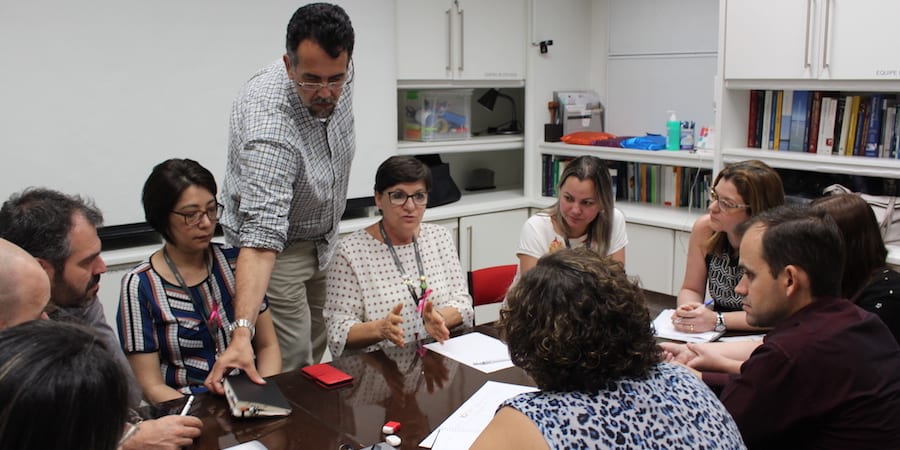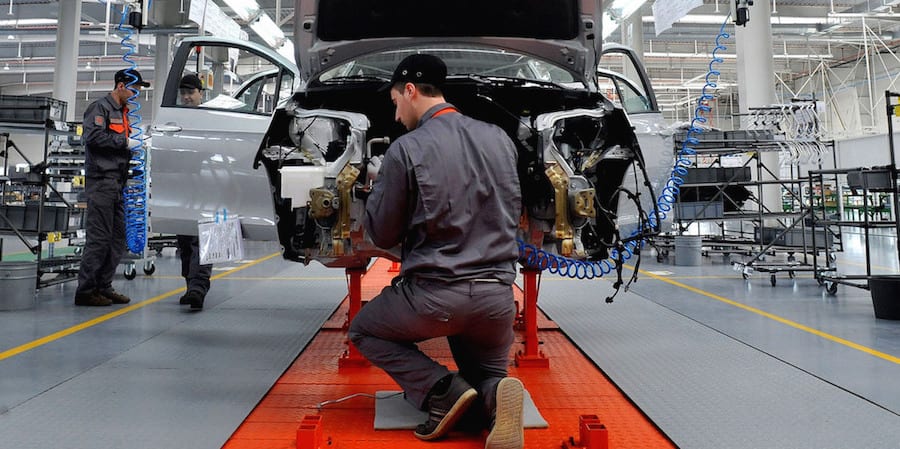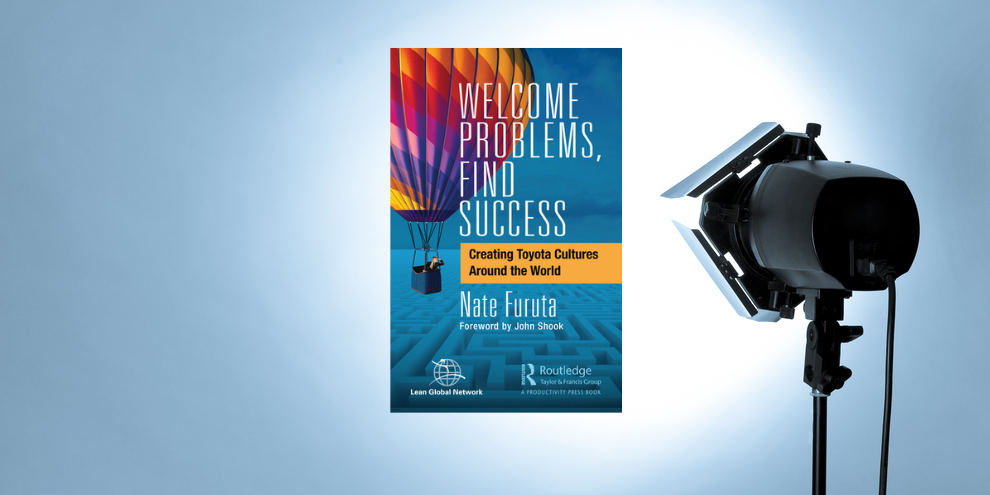
Lean and the global Covid-19 vaccine race
CASE STUDY – Pall Corporation used lean product and process development principles to create the process to produce billions of doses of the Oxford/AstraZeneca vaccine for Covid-19 in record time.
Words: Matt Zayko, LPPD team, Lean Enterprise Institute and Tony Hill, Clive Glover, Kevin Thompson, Byron Rees, Mark Ayles at Pall Corporation (part of Danaher Corporation).
In February 2020, the University of Oxford put out a proactive call to the UK biotech community to request help to develop a process that could mass produce a vaccine for what is now one of the worst pandemics in the last 100 years, caused by the novel coronavirus, SARS-CoV-2, triggering the disease Covid-19.
Determined to participate in this complex and what might just be the most important vaccine development process of our lifetimes, Pall Corporation responded to the call to action enthusiastically. The business is an operating company within the Life Sciences platform of Danaher Corporation, a $21 billion revenue company whose success and growth over the past 30 years have been supported by a set of well-established lean practices outlined in the Danaher Business System.
Before Covid-19, the typical best-case scenario for vaccine process development would take several years from the start of process development to full production ramp-up. With the dramatic effect that this virus has on day-to-day life globally, not to mention the obvious death and economic toll, the global community can’t afford to wait that long for a vaccine to be developed. Using lean product and process development (LPPD) principles, Pall was able to develop and deploy a full manufacturing process in eight weeks – an 80% reduction – to dramatically reduce normal development times.
To help frame up the key elements of this critical development cycle and organize its learning, the team at Pall Biotech approached the delivery of this new value to customers using Danaher Business System (DBS) tools aligned with the six LPPD principles recently introduced by Jim Morgan, senior advisor at the Lean Enterprise Institute (they are based on years of experience and observation with LEI learning partners). The principles are:
- Understand before you execute
- It’s a team sport
- Synchronize workflows
- Build-in learning and knowledge re-use
- Create new value streams
- It’s a people-first system
THE BACKGROUND
The University of Oxford had a proven solution using a harmless virus, genetically modified to cause the body to stimulate an immune response against the target. This had already been deployed for 12 other diseases and they were able to very quickly adapt this technology to target SARS-CoV-2. However, the previous diseases that had been targeted by this vaccine backbone never required more than a few thousand doses to be manufactured. Experts generally agree that, to be effective, a vaccine needs to be given to more than 70% of the affected population. Given the global nature of the Covid-19 pandemic, the number of doses needs to be in the billions, not the thousands. Clearly, new expertise was necessary to address the situation.
By the middle of March 2020, the University of Oxford, funded by the UK government, had pulled together a consortium of organizations to work on the large-scale manufacturing of the vaccine. A decision was made to begin the manufacture of the vaccine in parallel with the running of the clinical trials necessary to show its efficacy. There was a chance that the vaccine would not be effective, which meant that manufacturing was started at risk. However, all parties understood it was a risk that was necessary to avoid a terrible situation for public health where an effective vaccine may be approved for use but with insufficient quantities available to vaccinate the population.
As part of this consortium, Pall Corporation was tasked with developing the manufacturing process that could produce millions of doses of the vaccine at a time. This involved multiple steps, including determining the optimal set of unit operations required to initially make the vaccine and then purify it. Given that the product was to be used for vaccination purposes, the manufacturing process is heavily regulated and the vaccine is required to consistently meet the highest quality and safety standards.
Being a global supplier of equipment and consumables for the drug manufacturing industry, Pall develops processes that use equipment designed specifically for such processes on a regular basis. What was not regular in this situation was the speed at which this development process needed to take place.
Developing the process involved specifying and building the equipment and configuring and supplying the consumables used in the manufacturing process. This was done by a series of paper-based and experimental steps, including calculating the necessary process volumes and system sizes for each stage of the process that were needed to create the number of doses required, designing all the single-use consumables and running the full process both at a reduced scale and at full scale in order to gather data and confirm its performance. The process – including the equipment and consumable list and all the settings required to run the equipment – was transferred to three contract manufacturing organizations (CMOs) that began to run the process as quickly as possible in order to manufacture the vaccine.
AstraZeneca eventually took over as the overall vaccine development leader and took the effort global, expanding the manufacturing capacity so that, in addition to the original three, 20 CMOs are now running the process across the globe. Collectively, this network has the capacity to generate more than two billion doses by the end of 2021.
The initial challenge for the Pall team was to figure out how to successfully develop this vaccine production process much faster than the typical 40 weeks lead-time. The follow-up challenge was to be able to supply the equipment and consumables for manufacturing the actual vaccine to the broad range of CMOs.
THE LPPD PRINCIPLES IN ACTION
Understand before you execute means to deeply understand your customer and their context to hone in on what your unique value proposition for them is before you start the detailed development work.
In Pall’s case, a critical part of their success was developing a standard process platform 18 months before the pandemic began. This required the company to understand the process requirements through the voice of the customer. One of the first actions was to map out the typical upstream and downstream production steps and to understand the customer and process needs at each of these steps. This enabled the team to visualize the gaps on which process design work would need to be focused. Technical gaps were identified and prioritized to ensure that the process design would match the needs of Pall’s customers.
Due to the highly regulated nature of the biotech industry, well designed risk assessment and risk management tools were employed early in the process development stages to mitigate identified risks before moving forward to execution. With so many different organizations coming together so quickly and on an incredibly tight timeline, problems and risks needed to be clearly understood before making the appropriate decisions to move forward.
The pre-existing vaccine technology solution that we mentioned above was transferred from the Oxford laboratories to the Pall Process Development Services laboratory in Portsmouth, where it was scaled up from 3L, which can only produce enough doses for pre-clinical and early stage clinical trials, through 50L, to support larger clinical trials needed to establish safety and efficacy of the vaccine, to 200L scale, now capable of generating sufficient doses to contribute to a UK vaccination program. At the 50L scale, Pall involved the Process Engineering and Project Management teams within their Biotech division to design the industrialized and scalable process solution that would be deployed to the CMOs. It was at this point that the kaizen standard platform solutions that Pall had previously prepared were pulled upon to significantly speed up the development process.
The second principle – It’s a team sport – means that you need to engage the whole organization in developing products and processes. You need people from design, engineering, manufacturing, installation, and many more functions, to work together effectively to maximize the value you are creating for your customer.
A key difference in fighting this virus was the open communication and trust from all parties, sharing problems and needs with collaborative discussions. This trust was built quickly through technical competency as the consortium focused on the one goal of defeating the novel coronavirus, allowing them to align on the technical aspects to design and deliver the best process possible.
Pall Biotech had a cross-functional team of more than 20 highly dedicated people, who were co-located during the critical design phases. Hundreds of additional Pall Biotech team members supported other portions of the process development work. Having a clear focus and target helped align the team to deliver amazing results in eight weeks, versus the normal 40 weeks.
In development, to create flow – a basic lean principle – means to face the additional challenge of coordinating workflows from across the organization. LPPD helps us to synchronize workflows and maximize the benefits of concurrent development.
Collaborating and doing the technical work required Pall to align internal functions, external customers, and the extended supply base of more than 20 CMOs. Daily visual management enabled significant time reduction on long lead-time items, such as critical new equipment that alone had normal lead-times of 12 weeks.
Daily visual management, which is a cornerstone within DBS, was already integrated within Pall’s way of working, but cross-company communication required more effort. Early and frequent communication was a fundamental, along with common expectations and clearly defined outcomes. Several technical issues came up along the way and rapid communication allowed the consortium partners to adjust quickly to tackle those challenges as they arose during the development.
Build-in learning and knowledge re-use is made up of learning and discovery, and the ability to share that learning with the rest of the organization is foundational to great product and process development. It’s not just a matter of learning, but also of how to apply that learning to the development system for the next new product and process, which can lead to a huge competitive advantage.
As noted before, 18 months before the Covid-19 pandemic began in February 2020, Pall made the crucial decision to study and develop the templates for the repeatable viral vector process development work using kaizen events. The team had determined that, for 15 previous projects, there were patterns with many customers approaching Pall with very similar problems. This could be the basis for a standard platform.
The challenge was to determine what should be fixed in the template and available for re-use, and what should be flexible to allow for customization. Eventually, the company developed a manufacturing template with 80% standard and re-useable elements, and the other 20% customizable based on each specific case. These standard templates were critical in re-using knowledge quickly for the Covid-19 vaccine process development work.
Creating new value streams, instead of products in isolation, is also critical to solid lean product and process development. You need to think through every step that is required to deliver value to your customer. For traditional physical products, it may be planning, design, engineering, supply chain, manufacturing, delivery, and install, and how all these functions think about the way they bring innovation and value-creating activities to their work.
Pall had to understand and design an end-to-end value stream for large-scale production of the Oxford vaccine, including the processes, the equipment, and the consumables to support production of billions of doses. With the creation of the standard viral vector templates that re-uses 80% of the technical effort, the team was able to then configure standard bioprocess equipment solutions and manifold designs with proven capability, with no need for lengthy validation of new designs – thus reducing risk.
With more than 50 different manifolds used in each bioprocess, and over 20 CMOs, not having a standard available could lead to over 1,000 different designs. The standard simplified, and compressed, the end-to-end value stream design and simplified the supply chain planning and re-ordering. Pall Biotech also had to create an extended value stream replenishment model to support continuous supply to the CMOs as they quickly ramp up to the vaccine production volumes required.
People-first is woven throughout a lean development system, which should be designed to engage and challenge people and to help them to do and be their very best.
A core group of 20 and hundreds of other team members at Pall alone were challenged to get results at unprecedented speed on a critical vaccine. To engage people, there was an immediate need for people to co-locate and work together, while also maintaining social distancing or to effectively contribute remotely (which had to become part of Pall’s operating model since the onset of the pandemic). Leveraging the prior viral vector template standardization work freed up the technical resources and allowed the team to focus more time and energy on the critical, detailed process development work in order to provide value during this global health crisis.
This article is being co-published with The Lean Post.
THE AUTHORS






Read more


FEATURE – Why doesn't lean have a manifesto? The authors highlight the core principles and values of lean thinking, but warn these can only go so far without the learning that comes from working every day towards solving the next problem.


VIDEO - The CEO of a cancer center in Brazil gives us a tour of the their obeya room, taking us through their strategy deployment and explaining how it supports their mission of reducing the burden of cancer.




INTERVIEW – PL meets the author of the recently published book Welcome Problems, Find Success, who discusses bringing lean to different cultures and changing managerial behaviors.

